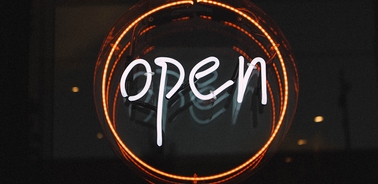- Home
- Our Purpose At Ie University
- Knowledge At Ie University
- Open Borders For Education
Open Borders for Education

The current pandemic affects everyone and knows no borders. It spreads without regard for national or cultural differences. It forces us into isolation to protect ourselves from mutual contagion, while at the same time encouraging us to join forces in the search for common solutions to defend our health and the lives of the weakest among us. But are we willing to learn from this experience?
By Paulina Etxeberria, Associate Professor at IE University.
As we reflect, study, and exercise in the confines of our homes, we are internalizing the notion that what we are experiencing is a global problem—one that is dragging us into a severe economic recession that requires us to help each other across all kinds of borders.
For the first time ever, the world’s best researchers are working together with a common goal: eliminating the coronavirus. Their collaboration fills us with hope.
Managers in the public and private sectors are also learning from one another and even collaborating on joint actions. Sharing their knowledge and healthcare teams with apparent empathy, they seem to have momentarily forgotten to defend their borders.
Most hopefully of all, this openness—this wealth of shared knowledge and experience—is reaching the digitized education system in real time, helping young people quickly gain an understanding of the problems of our globalized world.
Little by little, the pandemic is teaching us that we need to take care of each other. But are we all really in a position to learn this lesson and participate together in an open and globalized society?
The inequality barrier
There is a longstanding barrier that even new technologies cannot overcome: inequality in education. Family circumstances and place of birth continue to determine people’s education. The difference in the number of words a child uses at age three is highly representative of this problem. According to studies by the Nobel Prize-winning economist J. Heckman, a three-year-old child from a family with a low education level and an even lower income level has a vocabulary of about 500 words, while a child from a well-educated family can use about 1,100 words.
This evidence suggests that differences in socio-emotional and cognitive development begin to emerge at an early age. These differences accumulate over time, leading to gaps among schoolchildren in terms of access to computers and social and cultural networks corresponding to neighborhood of residence.
The ultimate result is growing economic and social inequality. According to Heckman, 50% of the difference in lifetime earnings can be attributed to qualities and knowledge obtained before age 18. These differences in opportunity are responsible for the social resentment that now threatens the cohesion and stability of democratic societies.
Education is the vaccine
Fortunately, we know what the solution is. We know that we can improve the lives of 7.7 billion people by sharing knowledge, learning to care for the planet, and bolstering education in the values of respect, tolerance, and cooperation. Today, we are proving that we have the resources, tools, and creative capacity to develop and spread education through different learning formulas. The vaccine already exists; we just have to use it.